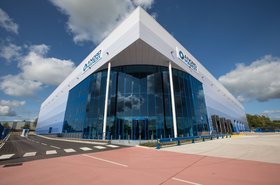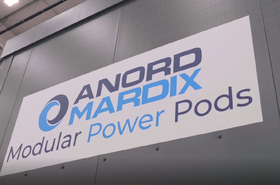The value of the modular data center construction market was $17.67bn in 2019, to reach a value of $73.53bn by 2025.
With the data center market growing drastically, it’s obvious that supply must keep up with demand. This is why switchrooms – alongside their speed of install, reduced costs, and overall efficiency – are quickly becoming the market’s new favourite critical power solution.
And with multiple modular skids making up one switchroom – sometimes as many as 17 – it's imperative construction and installation runs smoothly.
Project commissioning explained
Before we highlight the benefits of modular based engineering, we will first explain commissioning levels used in projects.
Commissioning levels are a useful categorization of the stages of completed modular switchrooms. Find a quick breakdown and explanation here:
Project commissioning (Cx) tags:
- Cx Level 1: Purple tag – All FWT are complete
- Cx Level 1: Pink tag – Ensure D+FAT docs are against equipment
- Cx Level 2: Red tag – Ready for energization; all docs complete
- Cx Level 3: Yellow tag – Site Acceptance Testing Cx complete – ready for Cx A Level 4
- Cx Level 4: Blue tag – Functional Performance Testing (CxA)
- Cx Level 5: Green tag – Integrated systems Testing (IST)
Time savings
A modular build is primarily known for its ability to reduce project lead times and result in overall project time-savings.
Key statistics from industry leading sources inform us that modular switchrooms result in an 84 percent reduction in on-site man hours during installation phase and a 75 percent reduction in on-site program from delivery to ‘Yellow tag’ milestone.
Essentially Level 3/Yellow tag would mean that the equipment is FWT tested and ready to be energized (once integrated i.e. cables connected) when delivered to site.
Once delivered to site, switchrooms can deliver up to 75 percent reduction in on site assembly and testing, saving time and labor costs.
In addition, the modular pod can take place simultaneously to the infrastructure build, radically reducing the overall project duration.
Efficiency
As well as saving the project time, modular switchrooms are also extremely efficient in comparison to a traditional site build.
Modular switchrooms are easily replicated, therefore if a project should need to upscale in the future, to keep up with demand, then a modular design would facilitate this.
In addition, after installation, the usual 'deep clean', a prerequisite to completing a site build, is no longer required.
In a traditional-style build, cleaning all switchgear on the modular skids to remove contractor install debris is essential to ensure that all equipment is functioning as it should.
But, because the modular skids would arrive on-site in factory condition, cleaned, and ready to go, the level of site interconnection is significantly reduced when compared to traditional modular builds.
Cost
Cost is often considered the crux of project decisions and trumps many other key considerations, aside from safety, during the construction phase.
Modular projects are cost-saving solutions, often because of its ability to reduce the labor required on-site throughout installation. The majority of the work is completed within a factory-controlled environment, eradicating the need for on-site duplication.
As a direct result of less time required to install the modular skids, the travel and accommodation costs for a team of Fitting Engineers become irrelevant – as most of the installation work is completed prior to the skids' delivery.
Lastly, using interconnecting busbar to power a modular switchroom, as opposed to using cable, has a significantly lower installation and lifetime maintenance cost.
Installation, testing, pre-testing and safety
Prefabricated modular switchrooms, are exactly that; fully constructed, tested and integrated switchrooms that are built off-site, in factory settings, shipped to location and arrive ready for installation.
When built off-site, these switchrooms usually have a higher quality install due to the clean conditions within a factory, and lead to a significant reduction in installation issues – as they are fully tested and ready to be used.
The impact on safety is a key motivator for implementing a modular design, as it significantly reduces the need for lifting large electrical products (such as PDU’s, switchgear, busbars etc.) and therefore reduces risks to the on-site team.
With a 77 percent reduction in lifting operations on site, this has a positive impact on project safety and the time needed to complete installation.
Iain Clark, a senior project manager at Anord Mardix, explains the increase in popularity of modular switchrooms in the industry:
“Ultimately, the end client receives a finished product that’s been manufactured, installed and tested off-site, then just needing minimal installation and commissioning on-site. This off-site modular prefabrication method is quickly becoming the normal way of building critical facilities and data centers, and can be deployed in large blocks of power, in a matter of just days. It also results in less waste and little or no fault finding once on site.
Skids and power pods can contain HV & LV Switchgear, UPS and air conditioning equipment, all pre-installed and pre-tested, ready to create new power rooms or power streams on-site, with full scalability. They can also give a level of standardisation across a customer’s portfolio, where skids and power pods can be deployed with the same equipment, almost anywhere.”
Overall, modular switchrooms are fast becoming the obvious choice in data center construction. The speed of deployment, it’s cost efficiency, the ability to construct them off-site, safely, whilst simultaneously completing other aspects of the data center build, makes a modular switchrooms a clear winner for data center projects with a tight deadline.
With data centers expanding at a colossal rate, it’s an exciting time for those within the critical power sector and we at Anord Mardix can’t wait to see what the future holds.
More from Anord Mardix
-

Sponsored How to be an ally at work
Want to help improve your company's diversity? Anord Mardix's Stephanie Dewhurst leads the way
-

Sponsored Anord Mardix, a Flex company
Flex completes the acquisition of Anord Mardix
-

Sponsored How Anord Mardix’s modular solutions impressed one of the largest companies on Earth
Through landing its biggest project yet, Anord Mardix has proven that when it comes to modular solutions, teamwork (and hard work) really does make the dream work

